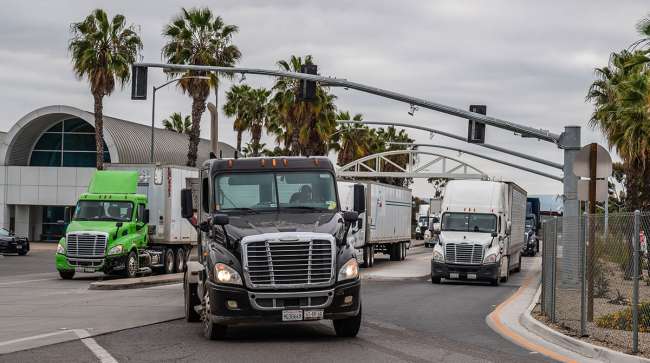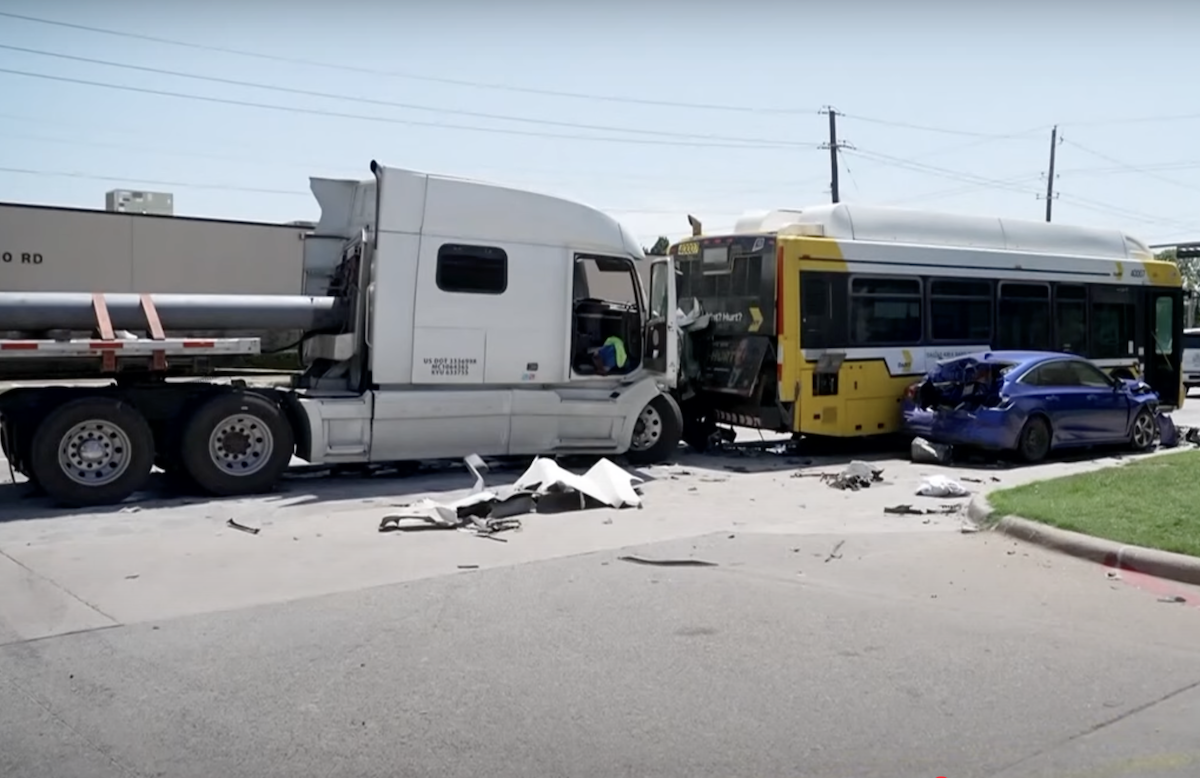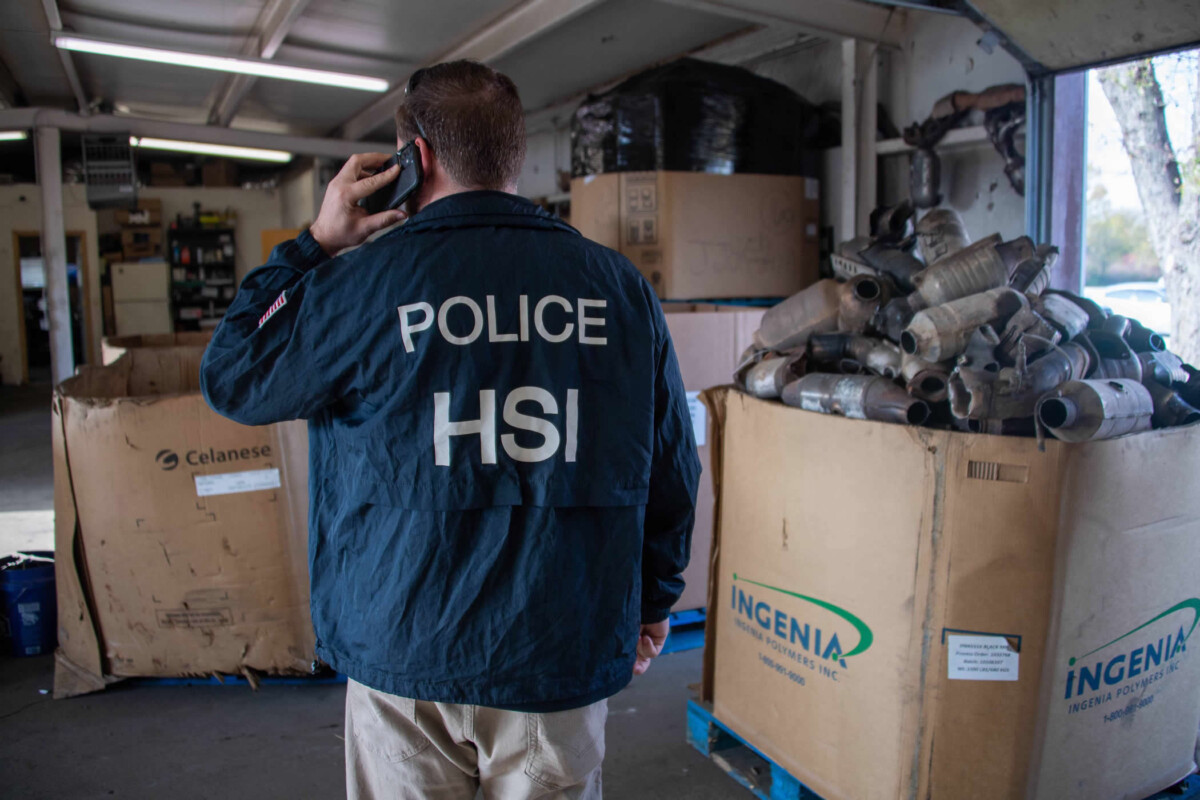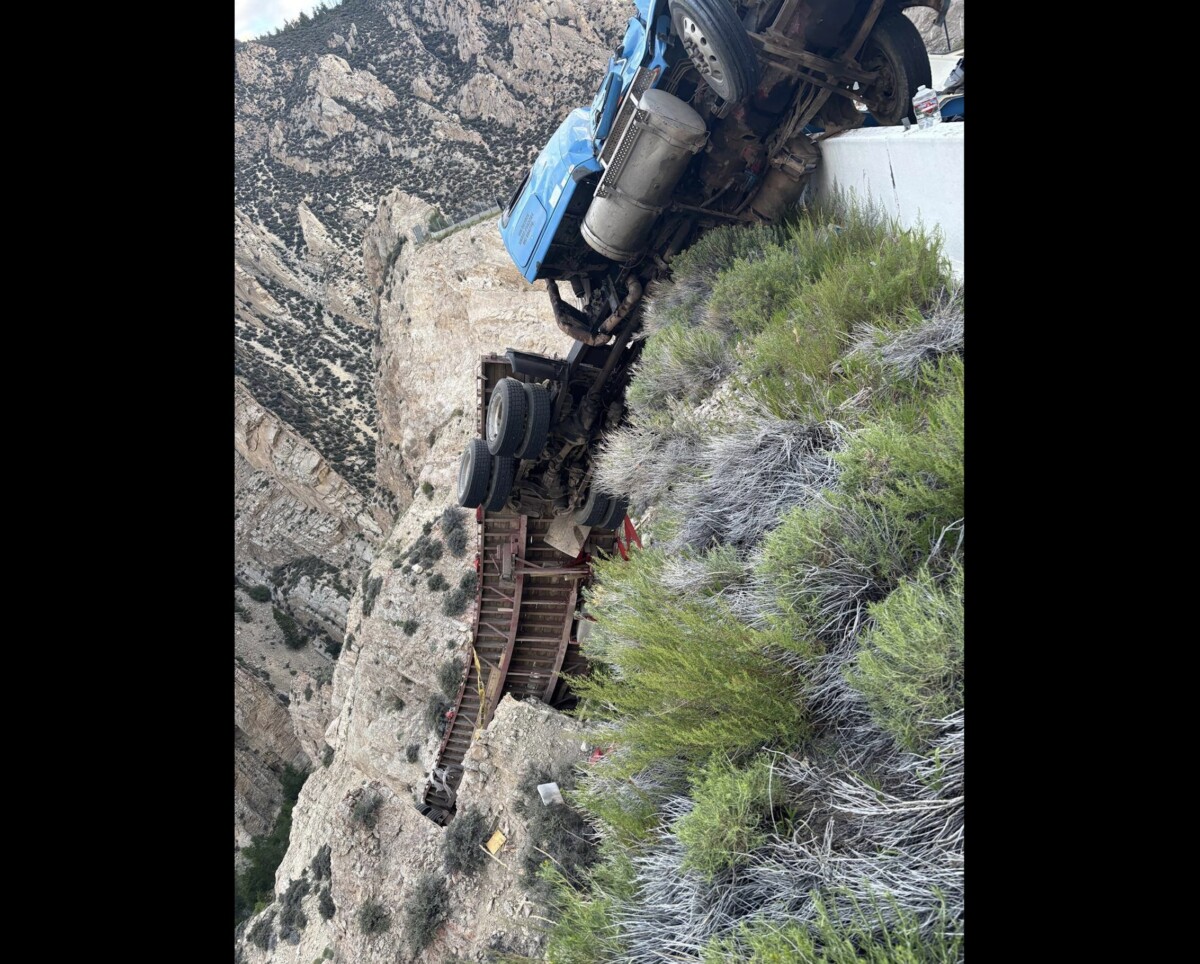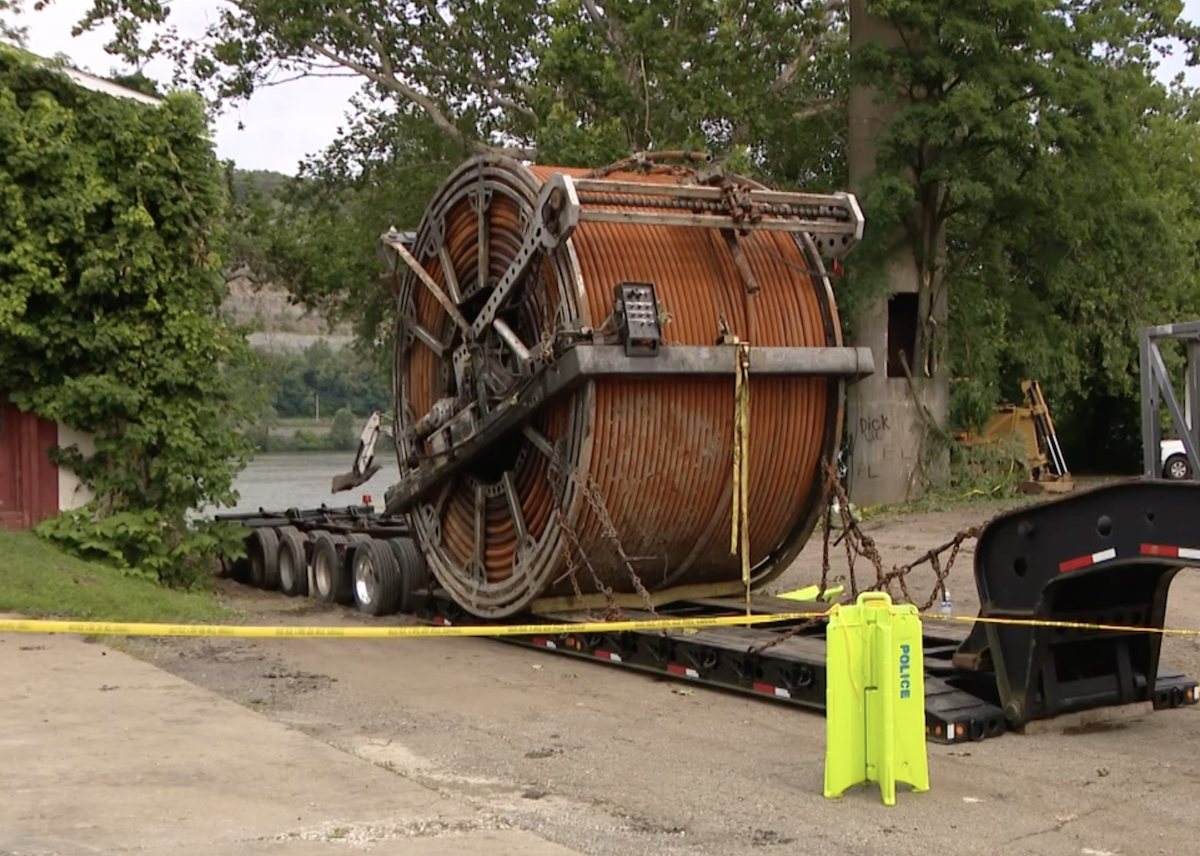Semi-trucks enter an inspection area at the Otay Mesa port of entry on the US-Mexico border in San Diego. (Ariana Drehsler/Bloomberg)
The Department of Transportation recently announced it will proceed with a $150 million grant to build a road and port of entry facility along the San Diego-Baja California border region.
Secretary Sean Duffy on April 15 explained the grant agreement is meant to improve freight connectivity, security along the international border with Mexico and the rollback of Biden-era environmental regulations. The Trump administration announced it had removed from this project a zero-emission vehicle charging provision.
“We moved to finalize this deal so we can help protect our southern border and crack down on drug trafficking while preventing tax dollars subsidizing pointless ‘Green New Deal’ priorities,” Duffy said April 15, pointing to progressive Democrats’ environmental policy vision.
The grant for the Southern California project was awarded in fiscal 2022 as part of the department’s Infrastructure for Rebuilding America grants. DOT explained in its announcement that the Biden administration had reached more than 3,200 unobligated grants that it promoted but never fulfilled.

Duffy
“This department will continue to clear the previous administration’s unprecedented grants backlog and deliver results,” Duffy said.
The Otay Mesa East Port of Entry project, as detailed by DOT in fiscal 2022, will build a new toll road (state Route 11) and port of entry facility at Otay Mesa near the Tijuana, Mexico, border to facilitate freight movement. The new port of entry will be designed to provide another route for about 3,600 trucks per day crossing the existing Otay Mesa and Tecate entry ports that are operating at capacity.
The funding also will be used to provide inspection equipment for U.S. Customs and Border Protection and a commercial vehicle enforcement facility to be utilized by the Federal Motor Carrier Safety Administration and California Highway Patrol.
“The project facilitates freight movement across borders with destinations at nearby distribution centers and warehouses, the ports of Los Angeles and Long Beach, and the Inland Empire’s megadistribution centers in Riverside and San Bernardino counties. The sponsor will establish a local hire agreement targeting disadvantaged groups, as well as a pre-apprenticeship program,” according to DOT in fiscal 2022.
In December, Gov. Gavin Newsom (D) touted the upcoming project.

Newsom
“This new port of entry will strengthen California’s world-leading economy, create jobs and support regional communities through trade,” he said.
In fiscal 2022, the department announced $1.5 billion in federal infrastructure grants for projects that included truck parking expansion operations. DOT’s INFRA grants are awarded primarily for multimodal transportation projects of regional significance.
On Capitol Hill, the transportation committees are debating proposals for what they intend will become a final comprehensive multiyear highway legislation. Federal authority for most highway programs, which were included in the Biden-era bipartisan infrastructure law, expire in the fall of 2026.

Capito
Earlier this month, Senate Environment and Public Works Committee Chairwoman Shelley Moore Capito (R-W.Va.) said, “Different states have different needs. I wouldn’t expect West Virginia, with our mountainous peaks and valleys, to prioritize the same transportation projects in other states in other parts of the country. By avoiding top-down mandates from Washington, and giving states flexibility to address the individual improvements, I think that is what we need to be looking at.”
She added, “The bill can support our common goals while ensuring that federal regulations, programs and policies recognize the different needs in our states. It will take collaboration from my senate colleagues, our stakeholders and the Trump administration in order to complete the bill.”
Capito’s committee is tasked with crafting the new multiyear highway legislation.

